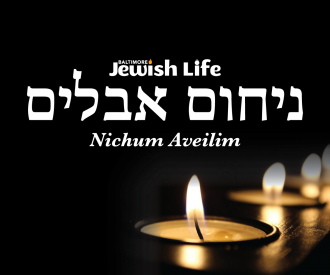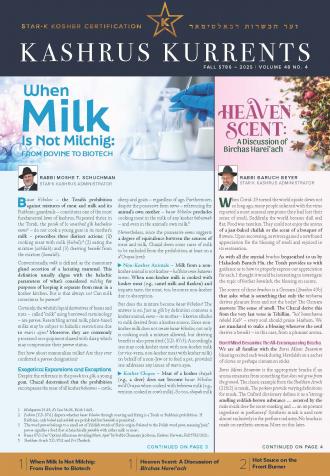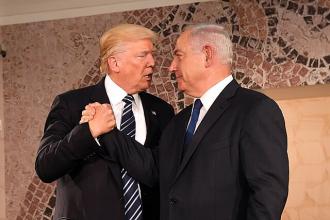רַבִּי אֶלְעָזָר אִישׁ בַּרְתּוּתָא אוֹמֵר, תֶּן לוֹ מִשֶּׁלּוֹ, שֶׁאַתָּה וְשֶׁלָּךְ שֶׁלּוֹ.
וְכֵן בְּדָוִד הוּא אוֹמֵר (דברי הימים א כט) כִּי מִמְּךָ הַכֹּל וּמִיָּדְךָ נָתַנּוּ לך (אבות ג:ז)
Rebbi Elazar Ish Bartuta encourages us to “give Him (Hashem) what is His, because you and that which is yours are really His.”[1] When we donate our money,[2] time or effort to Hashem, we naturally assume that we are giving Him something that is our own. In truth, we are merely giving Him what is (already) His.[3] This is why Hashem formulates the donations to the Mishkan as “vayikchu Li terumah.”[4] It is Hashem taking what is His, not the Jewish People giving a donation.
Ownership Through Creation
Why do our possessions belong to Hashem? The simplest explanation is that Hashem’s ownership is rooted in His creation of the world and all of its content. The Torah begins with the story of Creation not just because our world begins there historically, but also because it starts there philosophically. The creation narrative helps us appreciate where everything we see came from and (thus), who their true owner is.
This is how Rashi begins his commentary to the Torah. He explains that the Torah begins with the creation narrative, rather than with the first mitzvah, to teach us where our rights to Eretz Yisrael come from. The response to those who call our settlement of Israel thievery is that Hashem created and (thus) owns the world and gives lands to the nations he chooses.[5]
Our appreciation of this idea — Hashem’s creation and, thus, ownership — is a critical part of our hashkafa. We express it by reciting berachot — all of which speak of Hashem’s role as creator — before deriving pleasure from His world. Our recognition of Hashem as creator permits us to partake of and enjoy His creations.[6]
We reaffirm our recognition of this idea each Yom Rishon (which parallels the first day of creation) when we recite the pesukim “LaHashem ha’aretz u’meloah teivel v’yoshvei vah. Ki Hu al yamim yisadah v’al neharot yichonenehah” in the shir shel yom.[7] The pesukim assert Hashem’s ownership over two distinct components of the world: the frameworks (aretz and teivel)[8] and the content (melo’ah and yoshvei vah). During the first three days of creation, Hashem created the frameworks; during the last three, he filled them with content and inhabitants.
How We Get What We Have
The Midrash bases Hashem’s ownership on a second factor. In addition to His creation, Hashem is the one who gifts us with what we have. We mistakenly think that we acquire our possessions “on our own.” In truth, it is Hashem who facilitates our acquisition. The Midrash explains that Hashem, therefore, “owes” no one for the mitzvot they perform. We are only able to post mezuzot on the doorposts of our homes and separate tithes from the crops of our fields after Hashem gifts the homes and fields to us.[9]
Similarly, the Midrash[10] reads the word “honcha,”[11] simply translated as “your wealth,” as “chininecha” — the gifts with which Hashem graces us. We ought to view our acquisition of wealth and property as emanating from Hashem’s good graces.
These Midrashim remind us that our possessions belong to Hashem not only because He created them, but also because he arranges for us to attain them[1] .
We Too
As a prooftext for his teaching, Rebbi Elazar Ish Bartuta quotes the words of Dovid HaMelech: “Because it is all from You and from your hand we give to You.”[12] Dovid HaMelech clarified to those collecting money for the building of the Beit HaMikdash that their “donations” were merely returning what Hashem owns to Him.
As Dovid HaMelech already taught this idea, what did Rebbi Elazar Ish Bartuta add? I believe that the answer lies in his usage of the word “atah.” It is not just the world and its contents that are Hashem’s, but we are, as well. What we “own” is actually owned by Hashem not only because the objects are His, but because we, the “owners,” are also His creations and, thus, also owned by Him. As the gemara in Pesachim[13] teaches: “What a servant acquires is (automatically) acquired by his master.”[14]
Our very lives and bodies are not our own. They and we belong to Hashem — their creator. This is why we are prohibited from damaging our bodies[15] and are charged with the responsibility of safeguarding them.[16] Hashem is our creator and, thus, the owner of our bodies and lives.[17]
Hashem’s ownership of us is also included in the aforementioned pesukim we recite on Yom Rishon: “LaHashem ha’aretz u’meloah tevel v’yoshvei vah.” It is not only the land and its contents, but also its residents, that belong to Hashem.
Hashem’s far-reaching ownership is what we refer to in the first berachah of Shemoneh Esrei when we describe Hashem as “konei ha’kol — the owner of all.”[18] We turn to Hashem in prayer as His creations who are grateful for His having created us.
The Goal of It All
The Ramban saw our recognition of this fact as the goal of creation, all of the mitzvot, and all of our tefilot:
“The goal of all the mitzvot is for us to believe in our G-d and admit that (/thank him for) He created us.
This is the goal of creation. We have no other reason for the initial creation because G-d above has no desire for a world below besides man knowing and thanking his G-d for creating him.
The goal of raising our voices in prayer, the goal of shuls and the merit of the prayers of the masses is for people to have a place where they can gather and thank Hashem, publicize the fact that G-d created them, and say before Him, “We are your creations.”[19]
We express this appreciation in the tefilla of U’Vah L’tziyon: “Baruch elokenu she’bira’anu lichvodo v’hivdilanu min hato’im, v’natan lanu Torat emet, v’chayei olam nata b’tocheinu — Blessed is our G-d who created us for His honor, separated us from the wanderers, gave us a true Torah and implanted eternal life within us.”
Appreciating Our Lives
Sadly, we often take our lives for granted and forget that they are “G-d-given.”[20] Iyov is an example of someone who made this mistake. Though Iyov maintained his faith even after the loss of his children and possessions,[21] he faltered when he lost his health.[22] Iyov recognized his children and property as G-d-given, but saw his health as his. When Hashem allowed Satan to take his health away, Iyov felt that a line had been crossed.
Iyov, and people in general, take existence and good health for granted. In truth, we should appreciate that we are created and sustained by Hashem. This point was made by Yirmiyahu HaNavi in Sefer Eichah when he asks those complaining about their suffering why “a living person should complain”? The Midrash[23] explains that one who appreciates Hashem’s gift of life does not complain about his circumstances. We should appreciate the gift of life and know that the G-d who gives us life is a good G-d who has our best interests in mind.
The Kuzari[24] saw this as the deeper significance of the Shehecheyanu berachah. One who attributes their continued existence to Hashem’s good graces and thanks Him for it will have an easier time dealing with inevitable sickness and death.
In addition to the Shehecheyanu berachah, we express this appreciation with the words of Modeh Ani we recite each morning upon opening our eyes. Though not yet able to mention Hashem’s name before washing our hands, we immediately recognize and thank Him for reviving us. After we wash our hands, we repeat and elaborate upon this fact and mention Hashem by name in the berachach Elokai Neshamah. We also commit ourselves to continuing to express our appreciation of Hashem as creator and owner as long as our soul remains within us: “kol zeman she’ha’neshamah b’kirbi…”
We determine our perspective on life the moment we awake. Many take this moment for granted. Missing the opportunity to remind themselves of their creator leads them to view their existence as random and meaningless. By reciting Modeh Ani and Elokai Neshamah, we, in contrast, internalize the fact that Hashem has recreated us. We understand that we are Hashem’s creatures, placed here by Him for particular purposes and missions we aim to accomplish in the course of each day of the lives He grants us.
May the words of Rebbi Elazar Ish Bartuta remind us of where we and what we own come from and help us appreciate our existence and its purpose.
In our next piece, we will iy”H see how this perspective should impact our appreciation of everything we encounter in G-d’s world.
*Written up by Yedidyah Rosenswasser
[1] Masechet Avot 3:7.
[2] See Sefer Chagai 2:8.
[3] Sefer Vayikra 25:23 uses the idea of Hashem’s ownership to explain our inability to sell land beyond yovel.
[4] Sefer Shemot 25:2.
[5] See also Ibn Ezra (Shemot 3:22), who uses this idea to justify Hashem’s command to the Jewish People to borrow the finery of the Mitzrayim without the intention to return it.
[6] See Talmud Bavli, Masechet Berachot 35b.
[7] Sefer Tehillim 24:1-2. See also 104:24.
[8] Later in Avot (6:10) the Mishnah identifies “shamayim” and “aretz” as one of Hashem’s five kinyanim (possessions).
[9] Vayikra Rabbah, Acharei Mot, Parsha 27:2 based on Sefer Iyov 41:3.
[10] Midrash Tanchuma, Re’eh Perek 14. The Midrash reads the hey in “honecha” as a chet to get “shechininecha.”
[11] Mishlei 3:9.
[12] Sefer Divrei Hayamim I 29:10-16. This is a continuation of the piece “Vayevareich Dovid et Hashem” that we know from Shacharit.
Note that Dovid (Pasuk 15) builds off Sefer Vayikra 25:23.
[13] Talmud Bavli , Masechet Pesachim 88b.
[14] See also Sefer Yechezkel 18:4.
Our status as Hashem’s slaves (see Vayikra 25:42, 57) is another basis of Hashem’s ownership of us and our possessions.
[15] See Talmud Bavli, Masechet Ta’anit 22b and Mishneh Torah L’Rambam, Hilchot Choveil U’Mazik 5:1. See also Radva”z Hilchot Sanhedrin 18:1 and Sichat Hashavua (of the Lubavitcher Rebbe) 1814 who uses this idea to explain the prohibition to commit suicide.
See also Rav Aharon Lichtenstein (To Cultivate and to Guard: The Universal Duties of Mankind, By His Light: Character and Values in the Service of G-d) who uses this idea to explain why abortion is not a matter of a personal decision one makes concerning “their body.”
[16] Sefer Devarim 4:9, 15, Mishneh Torah L’Rambam, Hilchot Sanhedrin 26:3, Be’er Hagolah to Choshen Mishpat 427:90.
[17] We express this idea in Selichot when we exclaim, “Haneshama lach v’haguf pa’alach...”
[18] See Sefer Bereishit 14 for the source of this phrase.
[19] See Maharal (Netiv Ha’avodah 1:1), who explains that avodat Hashem indicates our recognition of Hashem’s ownership over the world.
[20] Interestingly, people often use the phrase “G-d-given” to refer to something they see as inalienable. We need to remember that though things that are G-d-given are not dependent upon the consent of other humans, they do, in fact, as the words imply, come from G-d, who needs to decide to give them to us.
[21] Sefer Iyov 1:21.
[22] Sefer Iyov 3:1.
[23] Eichah Rabbah 3:13.
[24] Sefer Kuzari 3:17.
Why should they belong to Him if He gives them to us? That seems too be a different point than us having no claim to reward for performing mitzvot with objects we only received from Hashem's grace.











